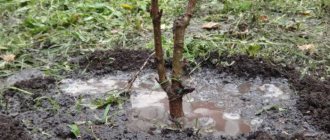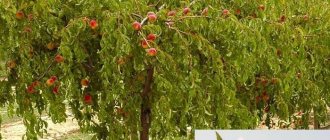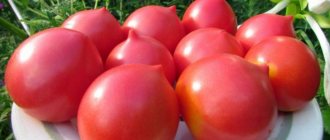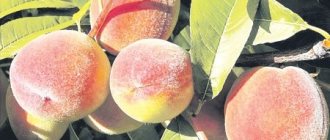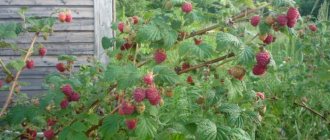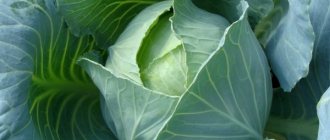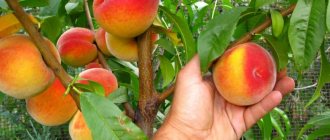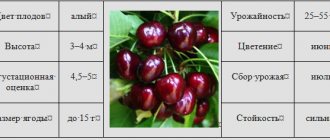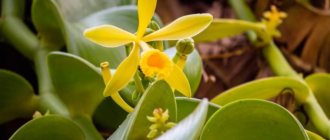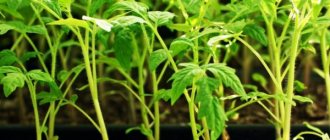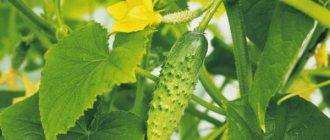Description of the variety
The crowns of trees of this species are quite lush, spreading and rounded. The flowers themselves grow in the form of graceful bells, and the fruits, when fully ripe, reach an average of 160 g and are characterized by their round shape. The first peach will appear at the beginning of August. They are colored carmine (more than two-thirds of the surface of the fruit) and yellow. The peach pulp itself is yellow in color, dense, juicy, sweet and soft with a pleasant fibrous structure. The fruit pit is larger than average and difficult to separate.
Peach variety Ambassador of Peace - description
Different varieties of peaches have different traits that set them apart from each other. All varieties are divided into “early”, “middle” and “late” according to the ripening period. There is also a classification by use: “table”, “canned” and “dried fruit”. It is the peach ambassador of peace that has all the necessary qualities to simplify the care of the harvest and protect it without losing the level of productivity.
Description of the variety
The crowns of trees of this species are quite lush, spreading and rounded. The flowers themselves grow in the form of graceful bells, and the fruits, when fully ripe, reach an average of 160 g and are characterized by their round shape. The first peach will appear at the beginning of August. They are colored carmine (more than two-thirds of the surface of the fruit) and yellow. The peach pulp itself is yellow in color, dense, juicy, sweet and soft with a pleasant fibrous structure. The fruit pit is larger than average and difficult to separate.
Advantages
The Ambassador of Peace variety is highly resistant to low temperatures, which allows it to be grown in difficult climatic conditions without deteriorating the quality of the fruit. Flower buds are especially resistant in winter. Like all other varieties, this one is characterized by a high degree of productivity. The harvest is usually harvested in mid-August. When the Ambassador of Peace variety reaches the age of 6 years or more, its yield ranges from 80 to 10 centners per 1 hectare.
Features of care
This variety requires regular annual pruning, which normalizes the yield to avoid overload. Even with the onset of epiphytotic years, powdery mildew is not capable of causing significant harm. Despite the fact that this variety is drought-resistant, it still requires periodic, uniform irrigation. During periods of extreme drought, it is recommended to water the crop approximately 2-3 times. The first watering should occur with the onset of June. The second - with the onset of July - in its first half. The third - with the onset of August. Since the soil must be saturated with water to a depth of 70 cm (it is at this depth that the bulk of the roots are located), up to 2 buckets should be used for each square meter during each watering.
Depending on the type of soil on which the Ambassador of Peace variety was sown, the type of fertilizer itself also depends. For example, podzolized soil needs periodic organic, phosphorus, nitrogen and potassium fertilizers, and soddy-podzolic soil needs regular use of mineral and organic fertilizers. The regularity of fertilizer use directly depends on the frequency of watering. The more often you water, the more fertilizer the crop requires, since water washes away nutrients from the soil. Of course, proper agricultural technology is necessary for proper peach care.
Before planting, it is necessary to mix the soil with manure (10 kg), superphosphate (50 g), wood ash (300 g) and potassium chloride (50 g). Every year the crop is fertilized in the area around the tree trunk. A couple of years after planting, the peach needs spring digging in the above-mentioned area, followed by the addition of urea (55 g) and ammonium nitrate (74 g). With the arrival of autumn, digging is carried out again and potash (from 50 g to 70 g) and phosphorus (from 45 g to 50 g) fertilizers are added. Once every 2-3 years, during digging in the spring, organic fertilizers are also used. After each cycle of the same period, the volume of fertilizer is increased by 20 g.
When a peach crosses the age threshold of three years, pruning is carried out exclusively in the spring, starting in March and ending in mid-April. Drying branches also need to be cut off periodically. It is highly not recommended to prune trees in the fall, as this will negatively affect their resistance to low temperatures in winter. We should not forget about cutting through the crown, which is carried out annually in order to facilitate the penetration of sunlight inside so that the peach can grow fully.
Advantages
The Ambassador of Peace variety is highly resistant to low temperatures, which allows it to be grown in difficult climatic conditions without deteriorating the quality of the fruit. Flower buds are especially resistant in winter. Like all other varieties, this one is characterized by a high degree of productivity. The harvest is usually harvested in mid-August. When the Ambassador of Peace variety reaches the age of 6 years or more, its yield ranges from 80 to 10 centners per 1 hectare.
Peaches cake
For baking you will need:
- 500 grams puff pastry
- Can of canned peaches
- 50 grams butter
- A tablespoon of syrup from canned peaches
- 1 egg
- 80 g sugar
- 80 g ground almonds
Place the puff pastry into the molds. After the syrup has drained from them, place the peaches in the middle of the molds with the dough and put them in the oven for 15 minutes.
At this time, mix butter and sugar, add almonds, eggs and syrup to the mixture. Mix everything well until smooth.
Next, take the molds with the dough and peaches out of the oven, put the whipped mixture in them and put them in the oven again for 10 minutes so that it sets and the dough browns.
Features of care
This variety requires regular annual pruning, which normalizes the yield to avoid overload. Even with the onset of epiphytotic years, powdery mildew is not capable of causing significant harm. Despite the fact that this variety is drought-resistant, it still requires periodic, uniform irrigation. During periods of extreme drought, it is recommended to water the crop approximately 2-3 times. The first watering should occur with the onset of June. The second - with the onset of July - in its first half. The third - with the onset of August. Since the soil must be saturated with water to a depth of 70 cm (it is at this depth that the bulk of the roots are located), up to 2 buckets should be used for each square meter during each watering.
Depending on the type of soil on which the Ambassador of Peace variety was sown, the type of fertilizer itself also depends. For example, podzolized soil needs periodic organic, phosphorus, nitrogen and potassium fertilizers, and soddy-podzolic soil needs regular use of mineral and organic fertilizers. The regularity of fertilizer use directly depends on the frequency of watering. The more often you water, the more fertilizer the crop requires, since water washes away nutrients from the soil. Of course, proper agricultural technology is necessary for proper peach care.
Before planting, it is necessary to mix the soil with manure (10 kg), superphosphate (50 g), wood ash (300 g) and potassium chloride (50 g). Every year the crop is fertilized in the area around the tree trunk. A couple of years after planting, the peach needs spring digging in the above-mentioned area, followed by the addition of urea (55 g) and ammonium nitrate (74 g). With the arrival of autumn, digging is carried out again and potash (from 50 g to 70 g) and phosphorus (from 45 g to 50 g) fertilizers are added. Once every 2-3 years, during digging in the spring, organic fertilizers are also used. After each cycle of the same period, the volume of fertilizer is increased by 20 g.
When a peach crosses the age threshold of three years, pruning is carried out exclusively in the spring, starting in March and ending in mid-April. Drying branches also need to be cut off periodically. It is highly not recommended to prune trees in the fall, as this will negatively affect their resistance to low temperatures in winter. We should not forget about cutting through the crown, which is carried out annually in order to facilitate the penetration of sunlight inside so that the peach can grow fully.
Peach “Ambassador of Peace”: variety description and care recommendations
The “Ambassador of Peace” peach (Prunus persica “Posol mira”) is one of the most popular varieties in home gardening, bred by experienced GNBS breeders. The variety belongs to the category of high-yielding, unpretentious and quite frost-resistant.
Varietal characteristics and description
The peach called “Ambassador of Peace” forms a tree of medium height, growing with proper care up to 5-6 m. The crowns of the plants are quite lush, spreading and rounded. The formation of flower buds occurs on all types of shoots.
The fruits are round in shape and very attractive in appearance. The weight of a marketable peach is 180-210 g. The skin is yellowish-carmine. The pulp of the ripe fruit is yellow, quite juicy, relatively fibrous, with a pleasant taste. The pit is separated from the ripe pulp with little difficulty. The fruit taste rating on a tasting scale is 4.8 points.
Features of care
When growing Ambassador of Peace peach, site selection and proper soil preparation are of great importance. It should be taken into account that when cultivating heat-loving plants in shaded areas, the wood on young shoots does not have time to fully ripen before the autumn period, and flower buds are also very poorly formed.
The area intended for growing peach trees must be well lit by the sun throughout the day, and also kept free of weeds. According to the description of the variety, it is best to plant fruit seedlings on moist, slightly acidic soils with good drainage and groundwater not closer than 0.8-1.5 m to the surface. The southern and southwestern sides of a personal or garden plot are best suited for growing peach.
Peach “Ambassador of Peace”: variety description (video)
When cultivating peach, you must strictly follow the basic recommendations for agricultural technology:
- peach trees need abundant watering during planting and during fruiting;
- despite high rates of drought resistance, a fruit plant without four times of watering at the active growing season will bring a small harvest with low taste qualities of the fruit;
- the presence of podzolized soil in an area intended for fruit plantings requires periodic application of organic, phosphorus, nitrogen and potassium fertilizers, and when growing peach on sod-podzolic soil, it is necessary to regularly use mineral and organic fertilizers;
- Preventive spraying of peach trees in the spring must be carried out several times, the first treatment of plants is carried out even before the buds open;
- for spring spraying, it is recommended to use the popular preparation “Horus” at the rate of ½ spoon per 10 liters of water or a freshly prepared 3% solution of Bordeaux mixture;
- in the autumn, it is very important to treat fruit trees with a solution of sulfur and lime or special insectofungicides;
- pruning of plants in the spring should be done before the spring growth of fruit trees activates;
- Proper pruning will prevent the depletion of fruit plantings and will help to form a plant crown that is convenient for care and harvesting.
After harvesting, it is necessary to properly insulate the fruit trees, as well as whitewash the trunk and mulch the trunk circles with organic matter. In areas with cold winters, plants should be provided with shelter to protect peach trees from freezing.
Reviews from gardeners
The Ambassador of Peace peach ripens around the second half of August. According to gardeners, the variety is frost-hardy and highly resistant to late frosts in the spring. The variety belongs to the category of popular self-fertile varieties and produces regular, very abundant harvests in the absence of pollinating plants.
Pros and cons of the Ambassador of Peace peach
The advantages of the variety include the following qualities:
- high productivity;
- excellent taste characteristics of the fruit;
- stable fruiting;
- fruits tolerate transportation well;
- resistance to low temperatures;
- strong immunity;
- universal use of fruits.
The disadvantages of the variety include the fragility of the branches. This happens when there is an abundance of fruit on them, so you need to constantly perform normal pruning.
Subtleties of growing varieties
Stone fruit crops bear fruit early, so it is very important to plant them at the right time. Fruiting also depends on the choice of seedling and its correct planting.
Landing dates
Peach is planted in the ground in spring at an air temperature of at least +5°C. By the time the procedure begins, sap flow should not yet begin in the seedling, this will make it easier to tolerate planting. Experienced gardeners recommend planting the Ambassador of Peace in the fall, since at this time it will direct all its efforts to rooting; it does not need to grow greenery during this period. Depending on the region, peaches are planted from mid-September to mid-October.
Read also Do-it-yourself lawnmower from a washing machine
Purchasing seedlings
In order not to be disappointed in the purchase in a few years, when the peach begins to bear fruit, it is necessary to purchase seedlings in nurseries or garden centers. Inspect the root system of the tree. You can check its viability by cutting the root with a knife. If the core of the cut is white, the peach is healthy and will take root quickly. The place where the scion grows together with the rootstock should be smooth, without sagging.
Preparing the seat
The site for the Ambassador of Peace peach is chosen to be well lit by the sun. If the place is shaded, the fruits will grow smaller than stated in the variety characteristics, and will also not be as sweet and aromatic. Peach will grow best on the south and southwest side of the site. Fertilizer of the following composition is placed in the planting hole:
- 10 kilograms of rotted manure;
- 300 grams of wood ash;
- 50 grams of superphosphate and potassium chloride.
The fertilizer is mixed with the soil from the planting hole.
Important! Groundwater should not approach the soil surface closer than 1.5 meters .
Planting scheme and process
The Ambassador of Peace peach is planted as follows:
- A hole is dug with a depth and width of 50-80 centimeters.
- Drainage made of sand, small stones, and expanded clay is laid at the bottom.
- Then the prepared substrate is poured in a heap.
- The roots are laid out in the center of the hill and covered with the remaining soil.
- The peach circle is watered abundantly.
The tree trunk circle is mulched with sawdust or peat, and the seedling is tied to a driven peg.
Peach variety Ambassador of Peace: description, features and characteristics
x
Check Also
Processing apple trees: features of tree care in early spring Early spring is the time for gardeners and summer residents to get to work. It is during this period that you need to prepare your trees...
If we talk about the description of the bushes, then they are of medium size and are not very spreading. Quite a lot of shoots grow on them. The branches have thorns along their entire length. The leaves are of different sizes, wrinkled, ...
Even though it is not an essential vegetable, garlic is nevertheless extremely popular in our “homestead farms”. Everyone grows these sharp and aromatic cloves. But growing is half the battle. ...
Jumbo is a modern high-yielding hybrid, bred in France quite recently, so there is no extensive data on its testing yet. The first harvest of this blackberry was grown in Ukraine, and, judging by...
Homemade basil: growing from seeds to seedlings according to all the rules One of the main stages is planting basil seeds to obtain seedlings. How correctly this process is carried out depends...
Stable and regular harvest from the apple tree Glory to the Winners Today, the gardening sector does not suffer from a shortage of fruit varieties, especially this trend concerns the apple tree. This plant, belonging to the Rosaceae family, seems strange...
What is a good hoe and how to choose the right one? A garden hand hoe is used for weeding, aerating the soil, hilling and creating small holes or rows. This tool is one of...
Main qualities and features of the use of chernozem Chernozem is the most fertile type of soil. Many companies supply this soil to summer residents and property owners in Russia. To make the right choice among the many...
Japanese quince: proper planting and care in the Moscow region Japanese quince is an amazingly beautiful ornamental shrub that is widely used in gardening, floriculture and landscape design. Indeed, it is rare to find plants that can simultaneously...
Melon is a melon crop popular among domestic gardeners, which can be grown in greenhouses and outdoors. There are dozens of different varieties of melon, which we will tell you about in this article. ...
Perhaps one of the most revered vegetables in the garden, which always has a place, is the cucumber. Every gardener wants to get a large harvest. To achieve this result you need to resort to certain...
Every housewife, of course, immediately recognizes the genus of perennial herbaceous plants of the Brassica family. And this is not surprising, because it is representatives of this genus that are part of the traditional kitchen seasoning - table horseradish. ...
If vegetable crops grow on the site, then most likely there are potatoes on it. Large areas are allocated for this root crop, so it is not always possible to arrange the necessary crop rotation. As a result of landing...
We grow tomatoes according to Oktyabrina Ganichkina’s method. The soil, according to Oktyabrina Ganichkina, as well as the climatic conditions of Russia and Ukraine (abundance of sun, dry air, possibility of frequent watering) are ideal for the growth of such...
Ready to board! Potatoes are an early planting crop and it is best to plant them as early as possible. Do tubers and tops suffer from frost when planted early? While the tubers are in the soil,...
Every year, gardeners ask the same questions: how to get rid of weeds in tomato beds without the hard work of weeding, how to maintain moisture in the soil and protect plants from overheating...
The use of potassium chloride as a fertilizer and its use in a summer cottage The correct use of fertilizers has a positive effect on plants, helps to acquire many useful and protective properties, and increases natural immunity. At the same …
Novice gardeners and others often cannot distinguish between plum and cherry plum, because both have many varieties and are a little similar to each other. Plum is a genus of plants that includes...
sibloma.ru
Further care for peach
Throughout the season, the peach is looked after: watered, fed, removed weeds around the tree, loosened the soil, and trimmed the crown if necessary.
Watering mode
The Ambassador of Peace is a drought-resistant variety, but, nevertheless, it requires watering for full growth and fruiting. The soil is moistened abundantly during planting, then in early June. The bulk of peach roots are located at a depth of 70 centimeters, so at least 20 liters of water are spilled under each tree. During dry summers, the Ambassador of Peace is also irrigated in July and August.
Tree feeding
In the year of planting, the peach is not fed. The fertilizer applied during planting is enough for him. The next spring, furrows are made around the tree and urea is added into them (50 grams per square meter). Before flowering, fertilizers with a predominance of potassium are applied. After fruiting, the soil is fed with a mixture of 40 grams of superphosphate and 50 grams of calcium chloride.
Trimming Features
The peach crown is formed from the first years of its life. Pruning is necessary for the following reasons:
- more sunlight reaches the fruits, making them sweeter and more aromatic;
- thinning the crown prevents the occurrence of diseases;
- pruning regulates the abundance of fruiting and ease of harvesting.
The best time for pruning is spring, the budding period. It is at this time that it is clear which branches have overwintered well and which ones require removal. To carry out the procedure, pruners, a hacksaw, and a garden knife are used. After trimming the branches, the cut areas are sealed with garden varnish.
Specifics of wintering
Peach Ambassador of Peace is a heat-loving crop. In autumn, trees are mulched with peat or compost to a height of 10-15 centimeters. In regions with a temperate climate, shelter will be required, especially for young seedlings. The structure is made of stakes driven into the ground and burlap wrapped around them. The rods should be equal to the height of the tree.
Instead of burlap, you can take cardboard and wrap it around the trunk. Several layers of non-woven material are wound on top.
In the southern regions, it is enough to cover the peach with soil to a height of half a meter.
Protecting peach from diseases and pests
The Ambassador of Peace is resistant to diseases and pests. But due to improper care, it can be affected by certain types of fungal diseases and harmful insects. This can happen due to a thick crown, too frequent watering of trees, or the presence of weeds in the tree trunk circle.
By following agricultural practices, the gardener will prevent the occurrence of peach scourges. For prevention, plants are sprayed in the spring, before buds open, with copper-containing preparations. In autumn, trees are treated with a solution of sulfur and lime, or insectofungicides.
Note! Proper implementation of agricultural practices will prevent the occurrence of most diseases and pests .
Peach Ambassador of Peace - description of the variety and reviews from gardeners
The peach has gained fame as a capricious plant. Gardeners are afraid to plant it on their plots due to the crop being affected by diseases and pests, the frequency of fruiting, and fear of frost.
But there is a variety that is unpretentious, high-yielding, and quite frost-resistant. This peach is called the Ambassador of Peace.
Further information about the pros and cons of the variety, cultivation, care, protection from diseases and pests, as well as the rules for harvesting and storing the crop.
Varietal characteristics of the fruit tree
The Ambassador of Peace reaches a height of 5-6 meters, the crown forms a round, spreading one. The green leaves are lanceolate and the pink flowers are bell-shaped. The variety is self-fertile and does not require pollinators.
The weight of the fruit varies between 180-200 grams. The peel is yellow with carmine splashes, the flesh is yellow, juicy, and has a delicate fibrous structure. The fruits are tasty, aromatic, and their sugar content reaches 12.1%. The stone is easily separated from the fruit.
Pros and cons of the Ambassador of Peace peach
The advantages of the variety include the following qualities:
- high productivity;
- excellent taste characteristics of the fruit;
- stable fruiting;
- fruits tolerate transportation well;
- resistance to low temperatures;
- strong immunity;
- universal use of fruits.
The disadvantages of the variety include the fragility of the branches. This happens when there is an abundance of fruit on them, so you need to constantly perform normal pruning.
Subtleties of growing varieties
Stone fruit crops bear fruit early, so it is very important to plant them at the right time. Fruiting also depends on the choice of seedling and its correct planting.
Landing dates
Peach is planted in the ground in spring at an air temperature of at least +5°C. By the time the procedure begins, sap flow should not yet begin in the seedling, this will make it easier to tolerate planting.
Experienced gardeners recommend planting the Ambassador of Peace in the fall, since at this time it will direct all its efforts to rooting; it does not need to grow greenery during this period.
Depending on the region, peaches are planted from mid-September to mid-October.
Purchasing seedlings
In order not to be disappointed in the purchase in a few years, when the peach begins to bear fruit, it is necessary to purchase seedlings in nurseries or garden centers. Inspect the root system of the tree. You can check its viability by cutting the root with a knife. If the core of the cut is white, the peach is healthy and will take root quickly. The place where the scion grows together with the rootstock should be smooth, without sagging.
Preparing the seat
The site for the Ambassador of Peace peach is chosen to be well lit by the sun. If the place is shaded, the fruits will grow smaller than stated in the variety characteristics, and will also not be as sweet and aromatic. Peach will grow best on the south and southwest side of the site. Fertilizer of the following composition is placed in the planting hole:
- 10 kilograms of rotted manure;
- 300 grams of wood ash;
- 50 grams of superphosphate and potassium chloride.
The fertilizer is mixed with the soil from the planting hole.
Important! Groundwater should not approach the soil surface closer than 1.5 meters .
Planting scheme and process
The Ambassador of Peace peach is planted as follows:
- A hole is dug with a depth and width of 50-80 centimeters.
- Drainage made of sand, small stones, and expanded clay is laid at the bottom.
- Then the prepared substrate is poured in a heap.
- The roots are laid out in the center of the hill and covered with the remaining soil.
- The peach circle is watered abundantly.
The tree trunk circle is mulched with sawdust or peat, and the seedling is tied to a driven peg.
Further care for peach
Throughout the season, the peach is looked after: watered, fed, removed weeds around the tree, loosened the soil, and trimmed the crown if necessary.
Watering mode
The Ambassador of Peace is a drought-resistant variety, but, nevertheless, it requires watering for full growth and fruiting. The soil is moistened abundantly during planting, then in early June. The bulk of peach roots are located at a depth of 70 centimeters, so at least 20 liters of water are spilled under each tree. During dry summers, the Ambassador of Peace is also irrigated in July and August.
Tree feeding
In the year of planting, the peach is not fed. The fertilizer applied during planting is enough for him. The next spring, furrows are made around the tree and urea is added into them (50 grams per square meter). Before flowering, fertilizers with a predominance of potassium are applied. After fruiting, the soil is fed with a mixture of 40 grams of superphosphate and 50 grams of calcium chloride.
Trimming Features
The peach crown is formed from the first years of its life. Pruning is necessary for the following reasons:
- more sunlight reaches the fruits, making them sweeter and more aromatic;
- thinning the crown prevents the occurrence of diseases;
- pruning regulates the abundance of fruiting and ease of harvesting.
The best time for pruning is spring, the budding period. It is at this time that it is clear which branches have overwintered well and which ones require removal. To carry out the procedure, pruners, a hacksaw, and a garden knife are used. After trimming the branches, the cut areas are sealed with garden varnish.
Specifics of wintering
Peach Ambassador of Peace is a heat-loving crop. In autumn, trees are mulched with peat or compost to a height of 10-15 centimeters. In regions with a temperate climate, shelter will be required, especially for young seedlings. The structure is made of stakes driven into the ground and burlap wrapped around them. The rods should be equal to the height of the tree.
Instead of burlap, you can take cardboard and wrap it around the trunk. Several layers of non-woven material are wound on top.
In the southern regions, it is enough to cover the peach with soil to a height of half a meter.
Protecting peach from diseases and pests
The Ambassador of Peace is resistant to diseases and pests. But due to improper care, it can be affected by certain types of fungal diseases and harmful insects. This can happen due to a thick crown, too frequent watering of trees, or the presence of weeds in the tree trunk circle.
By following agricultural practices, the gardener will prevent the occurrence of peach scourges. For prevention, plants are sprayed in the spring, before buds open, with copper-containing preparations. In autumn, trees are treated with a solution of sulfur and lime, or insectofungicides.
Note! Proper implementation of agricultural practices will prevent the occurrence of most diseases and pests .
Harvesting and storage rules
Peaches are harvested when their color becomes deep yellow with bright carmine splashes on 80% of the fruit area. They do not ripen on the tree at the same time, so harvesting takes place over several days. If fruits are transported over long distances, they are collected 5 days before full ripening.
In room conditions, the fruits can be stored for 5 days. For long-term storage, they are placed in the refrigerator or basement. When keeping peaches in boxes, each fruit is wrapped in paper. Fruits can be dried, frozen, and also prepared from them into compotes, juices, preserves, and jams.
The diversity of fruit crops makes it possible to choose varieties suitable for cultivation in a particular region, in accordance with taste preferences and intended use. Further in the article we will talk about the popular variety of peaches Ambassador of Peace, its advantages, cultivation and care technology.
Peach variety Ambassador of Peace: botanical description and characteristics of the variety
The diversity of fruit crops makes it possible to choose varieties suitable for cultivation in a particular region, in accordance with taste preferences and intended use. Further in the article we will talk about the popular variety of peaches Ambassador of Peace, its advantages, cultivation and care technology.
Detailed description of the peach variety Ambassador of Peace
A mid-early variety for universal use, which was bred by experienced breeders of the Nikitsky Botanical Garden and entered into the State Register in 2014.
Ambassador of Peace can be successfully grown in regions with cold climates, since the variety is frost-resistant. The taste qualities of the fruit are rated by experts at 4.8 out of 5 possible points. Tree productivity is high. The garden requires minimal maintenance.
Description of the tree
Peach trees can reach 5–6 m in height, that is, the trees are medium-sized, with a lush, spreading crown of a round shape. The leaves are lanceolate and medium in size. The color is green, the surface of the leaf plate is glossy. Flower buds are formed on all types of shoots, and the flowering process has a long period. The flowers are bell-shaped, colored pink, and have 5 petals. The variety Ambassador of Peace is self-fertile.
Description of fruits
The fruits look very attractive. The average weight of round fruits is 180–220 g, and the maximum weight is close to 250 g.
The peel is partly yellow and partly carmine in color, of medium density with slight pubescence. It comes off well from ripe fruits.
The pulp of the fruit is rich yellow in color, juicy, and has a dense structure with fibers.
The taste is pleasant, harmonious, sweet and sour, rated 4.8 out of a maximum of 5 points. The fruits have a pronounced aroma.
The stone is medium in size, egg-shaped, and is separated from the pulp of a ripe fruit with little effort.
The fruits contain:
- sugar - 12.1%;
- organic acids – 0.92%;
- vitamin C - 9.2%.
Characteristics of the Ambassador of Peace variety
This variety is classified as mid-early, with harvesting in early August. It has a universal purpose, is unpretentious in care and brings a fairly rich harvest. The beginning of fruiting occurs in the 3rd–4th year of the fruit tree’s life. Detailed characteristics of the Ambassador of Peace will be given below.
Drought resistance, frost resistance
The Ambassador of Peace tolerates frosty weather well , which is a significant advantage for northern regions with a harsh climate. Trees react normally to spring temperature changes with sudden cold snaps, and flower buds are not injured. Lowering the temperature does not affect the quality of the crop.
Detailed description of the peach variety Ambassador of Peace
A mid-early variety for universal use, which was bred by experienced breeders of the Nikitsky Botanical Garden and entered into the State Register in 2014.
Ambassador of Peace can be successfully grown in regions with cold climates, since the variety is frost-resistant. The taste qualities of the fruit are rated by experts at 4.8 out of 5 possible points. Tree productivity is high. The garden requires minimal maintenance.
Description of the tree
Peach trees can reach 5–6 m in height, that is, the trees are medium-sized, with a lush, spreading crown of a round shape. The leaves are lanceolate and medium in size. The color is green, the surface of the leaf plate is glossy. Flower buds are formed on all types of shoots, and the flowering process has a long period. The flowers are bell-shaped, colored pink, and have 5 petals. The variety Ambassador of Peace is self-fertile.
Description of fruits
The fruits look very attractive. The weight of round fruits, on average, is 180–220 g, and the maximum weight is close to 250 g. The peel is partially yellow and partially carmine-colored, of medium density with slight pubescence. It comes off well from ripe fruits.
Read also Onion sugar honey water
The pulp of the fruit is rich yellow in color, juicy, and has a dense structure with fibers.
The taste is pleasant, harmonious, sweet and sour, rated 4.8 out of a maximum of 5 points. The fruits have a pronounced aroma.
The stone is medium in size, egg-shaped, and is separated from the pulp of a ripe fruit with little effort.
The fruits contain:
- sugar - 12.1%;
- organic acids – 0.92%;
- vitamin C - 9.2%.
Peach Ambassador of Peace variety description | ❀Description of all varieties❀
Peach Ambassador of Peace variety description
Variety: AMBASSADOR OF PEACE
Crop: Peach (Prunus persica (L.) Batsch)
Characteristics: Included in the State Register for the North Caucasus (6) region. Early-medium ripening variety, universal purpose. The tree is medium-sized, fast-growing with a paniculate, slightly spreading crown of medium density. The leaves are medium-sized, lanceolate, short-pointed, green, shiny, the edge of the leaf is crenate-serrate. In the inflorescence, the flowers are single, pinkish, pinkish, with ovoid, free 5 petals. The fruits are very large, round in shape, with an average weight of 250 g. The peduncle is short, thick, with good separation from the branch and weak attachment to the stone. The main color of the fruit is yellow, the outer color is red or carmine-red, blurred by stripes. The skin is medium rough with medium velvety pubescence. The pulp is yellow, medium density, juicy, fibrous. The sweet and sour taste is very rich and harmonious. Tasting score 4.8 points. The fruits contain: dry matter - 13.6%, sugar - 12.1%, acid - 0.92%, vitamin C - 9.2%. The stone is medium-sized, ovoid, pointed, oblique, in pits and grooves, easily separated from the pulp. The average yield is 242.5 c/ha. The variety is slightly affected by diseases and has average resistance to drought and heat resistance.
Year included in the register: 2014
Ripening period: mid-early
Region of admission: North Caucasus
Originator(s): FGBUN 'ORDER OF THE RED BANNER OF LABOR NIKITSK BOTANICAL GARDEN - NATIONAL RESEARCH CENTER RAS'
Characteristics of the Ambassador of Peace variety
This variety is classified as mid-early, with harvesting in early August. It has a universal purpose, is unpretentious in care and brings a fairly rich harvest. The beginning of fruiting occurs in the 3rd–4th year of the fruit tree’s life. Detailed characteristics of the Ambassador of Peace will be given below.
Drought resistance, frost resistance
The Ambassador of Peace tolerates frosty weather well , which is a significant advantage for northern regions with a harsh climate. Trees react normally to spring temperature changes with sudden cold snaps, and flower buds are not injured. Lowering the temperature does not affect the quality of the crop.
Trees of this variety cope well with dry periods ; the minimum required watering can be done twice a year, since fruiting depends on it.
Peach pollinators
This is a self-pollinating variety , for the cultivation of which there is no need to plant pollinator trees, which is a very attractive characteristic of the Ambassador of Peace.
Since flowering occurs over a long period, pollinating insects (bees, bumblebees) manage to pollinate most of the flowers, resulting in a bountiful harvest.
Productivity of the variety
The fruits ripen in the first days of August. A six-year-old tree, as a rule, brings a yield from 80 c/ha to 100 c/ha (by the age of eight). Over the years, productivity gains momentum and can reach 242.5 c/ha per adult, fruit-bearing peach.
The average duration of active fruiting is 10–15 years.
Area of application of fruits
Varietal fruits are universal in use because they can be used:
- fresh;
- in the form of compotes and juices;
- as raw material for jams and preserves;
- in canned form;
- as a frozen semi-finished product;
- in dried form, in the form of dried fruits.
Resistance to diseases and pests
The variety was obtained as a result of painstaking selection work, due to which it is practically not susceptible to disease, or the damage occurs in a very weak form. The Ambassador of Peace has good immunity to powdery mildew.
PEACH “AMBASSADOR OF PEACE, 1 year”
This is one of the highest quality varieties with attractive large fruits.
The tree is medium-sized with a round, spreading crown.
Self-fertile peach variety. The tree blooms in the middle period, long flowering ensures a good formation of flower buds.
Flower buds appear abundantly on all types of shoots.
The variety is frost-resistant, characterized by resistance to spring frosts and high quality fruits.
The fruits are beautiful, weighing 180–200 g, and ripen in early August.
The main color is yellow, the top color is carmine, occupying up to 80% of the surface.
The pulp is yellow, quite dense, with a pleasant harmonious taste (4.8 points).
The stone is larger than average in size and separated from the pulp to a medium degree.
Resistant to powdery mildew.
It requires annual pruning to avoid overloading the plants with the harvest.
A variety for universal use. Has high transportability.
• – Are you interested in this variety? Do you need more information? We are ready to answer your questions.
Write! Call! Consultation hours from 9:00 to 19:00
Please pay attention!
The first 20-25 days
are key in terms of importance for the rooting of plants in a new place . The survival rate of young trees and shrubs in a new location and their further development largely depend on timely pruning and regular watering in the first three weeks.
Trimming.
Mandatory pruning
is recommended for fruit plants When planting, carry out post-planting pruning, leaving shoots no more than 40-45 cm long. It is also recommended to
annually
remove dry, damaged or fattening shoots, thinning, and crown formation.
Watering.
Young plants REQUIRE
regular , proper watering.
For successful rooting of the plant, it is important that the soil is wetted not only from above (by 7-12 cm), but to the depth of the tips of the roots of the seedling (up to 35-45 cm).
To do this, after planting during the first month
, you must water the plant 2 times a week, 1 bucket per tree.
In dry times, it is recommended to increase watering to 1.5-2 buckets of water per plant 2-3 times a week. Mulching.
To preserve moisture in the soil for a long time, it is advisable to use organic mulching of the tree trunk circle with a layer of 7-10 cm.
Loosening.
Regular, shallow.
Weeding around the tree trunk. Important to remember!
Lack of pruning during planting and irregular or insufficient watering in the first months after planting significantly reduce the percentage of plant survival in a new location.
Unsecrets of Divosad.
1. Planting dates. To achieve successful survival of seedlings, the sequence of actions is quite simple - first, a cold snap in nature, then, as a consequence, leaf fall and the transition of plants to the dormant stage, and it is during this period of cold weather and leaf fall that the seedlings are transplanted. but not in reverse order. So, cold snap to +10°C and below → stopping sap flow → replanting plants. 2. A common mistake is irregular watering. Regular watering after planting is one of the most important non-secrets for the survival of young plants.
Good luck with your choice.
Welcome to the world of Divosad on
Facebook!
!
Dear guest! We invite you to join our group of amateur gardeners on Facebook under the same name Divosad
.
Receive in the Divosad group
not only free consultations, promotions, exchange of experience and support for caring for your plants, but also a friendly circle of friends, like-minded people and a charge of positive emotions.
We really want our group to be cozy and exciting for everyone who loves gardening, roses, ornamental plants and berry crops.
Advantages and disadvantages of the variety
- The most significant advantages of this fruit variety are:
- high productivity;
- stable fruiting;
- taste and aroma, highly rated by experts;
- frost resistance is a characteristic that is the main criterion for the popularity of a variety in various climatic regions;
- high immunity to pests and diseases typical of fruit trees, resistance to powdery mildew;
- good transportability, without loss of presentation.
- The disadvantages of the Ambassador of Peace are:
- the fragility of branches that can break under the heavy weight of the crop, so compliance with pruning rules is an extremely important point in the process of caring for trees.
Rules for planting peach seedlings
The key to proper planting of seedlings is:
- choosing a suitable location for creating an orchard;
- pre-treatment of the site and preparation of the planting hole;
- pre-planting treatment of seed;
- carrying out planting in accordance with agricultural technology.
Timing and choice of landing site
A sunny, south- or south-west-facing area will be an ideal place to grow peach trees. This may be a small hill or hilly area.
Trees can grow near buildings, the main thing is that the trees are not blown by strong winds; gusty and through air flows adversely affect the life processes of fruit trees.
Since peaches love to “bathe” in sunlight, its access should not be blocked, so the distance between trees in the garden should be about 3 m, in addition, tall and very dense neighbors should be excluded.
The soil on the site should be slightly acidic, moist, and the occurrence of groundwater should be no closer than 1–1.5 to the surface of the earth. At the planting site, it is necessary to organize a high-quality drainage system.
As for the timing of planting, it is recommended to plant seedlings during the dormant period. It is optimal to do this in the spring, in March, and in the fall - in early September. However, first of all, it is worth taking into account the climatic features of the region where the orchard is planned to be grown.
In warmer areas, autumn planting is recommended, while in northern areas, it is better to plant seedlings in the spring , since they will have more time to adapt during the spring and summer periods, and they will be able to take root well before the onset of cold weather.
Preparing the site and seedlings for planting
Preparing the site for planting is a very important stage and it begins long before the actual planting of seedlings, about half a year in advance. Therefore, in order for spring planting to be successful, the pit begins to be prepared in the fall, and for autumn, preparation is carried out in the spring.
The planting hole for a peach tree should have dimensions of 80 x 100 cm. In this case, planting is carried out according to the scheme - 4 meters between seedlings and 5 meters between rows.
The bottom of the pit is filled with a nutrient mixture of chernozem and humus: 11–15 kg and 250–350 g of superphosphate, thus creating an earthen mound on which the seedling will be located in the future.
When choosing seedlings, you need to carefully examine their appearance:
- the root system, which should be large and have many shoots, without dried out and rotten roots;
- surface of the bark - there should be no damage on it. On the inside of the bark, if you break off a small piece, it should be green, not brown - this confirms the healthy condition of the seedling;
- age of planting material. It is optimal if the tree is no more than 1.5 - 2 years old;
- The grafting site should not have any debris.
Pre-planting preparation of seedlings consists of inspecting the rhizome and removing 0.5-1.5 cm of roots to healthy tissue. Each cut should release some juice and be white in color.
The process of planting young seedlings
Planting takes place using the following technology:
- A seedling is immersed in a prepared hole with an earthen mound. Its roots are carefully distributed over the surface of the hill.
- Place a peg next to the seedling. The height of such a support should be about 0.5 m above ground level.
- The planting hole is buried in such a way that the grafting site is slightly above ground level.
- The soil in the tree trunk circle should be compacted a little, creating a kind of hole with a decrease in the soil level of the seedling.
- After planting is completed, the soil is compacted and watered with 20–30 liters of water.
- As soon as the water is absorbed, it is necessary to tie the seedling to the peg with twine, which will serve as some protection for the still weak plant from sharp gusts of wind.
- Then the tree trunk circle is mulched. To do this, you can use a layer of manure about 8–10 cm thick. It is important that the fertilizer does not touch the trunk of the seedling itself. It is possible to use sawdust and peat, the layer of which should be 5–10 cm.
- Several days after planting, the tree requires another abundant watering.
Read also Diet for feeding dairy cows in winter
Frost-resistant peach where to buy seedlings in a nursery in Moscow, St. Petersburg with a description of planting and care
Peach, peach tree (lat. Persica) is a woody plant of the Rosaceae family, a relative of the almond tree .
Common peach (Persica vulgaris) is a tree, up to 8 m high, with pink flowers that appear before the leaves. The homeland of peach is China; this country currently ranks first in its industrial cultivation. Peach is a heat-loving tree. Most varieties do not tolerate temperatures below -25°C . Trees reach a height of up to 4 m, with a crown up to 6 m in diameter. Peach blooms in mid or late April, for 10-12 days. Peaches of early varieties ripen 3 months after flowering, mid-early ones - after 3-4 months, late ones - after 4-5 months.
Peach usually bears fruit 2-4 years after planting, within 10-15 years. Depending on the variety, the fruits have different weights - from 200 to 300 g, pubescent or smooth (nectarines), round or flattened (figs).
Peach trees are highly productive; one tree can produce 30-50 kg of fruit. By the way, peaches are one of the three most delicious fruits along with oranges and mangoes. You can buy peach seedlings in our nursery on the website www.zpitomnik.ru.
We guarantee absolute variety compliance and high survival rate.
Selection and purchase of peach seedlings
When purchasing seedlings, you should pay attention to the following points : the origin of the seedling, whether it is adapted to the area where it will be planted; the place where the rootstock grows together with the scion should be smooth, without sagging or sap; how healthy the root system and bark of the seedling is, there should be a green, not brown, layer at the place where a piece of bark is pinched off; seedling age: annuals are most suitable for better survival.
Location and landing. Swampy, damp areas, as well as places located in lowlands, are unsuitable for peach. We recommend places on the south side of the site, well lit and protected from the wind. You also need to make sure that large trees or bushes do not shade the seedling. Planting should be done at a distance of at least 3 meters from other plantings. When grown in the shade, young peach shoots do not have time to ripen the wood over the summer and flower buds are poorly formed on the tree.
If strawberries, clover, alfalfa, melon or nightshade crops were grown on the site, then peaches cannot be planted in this place for 3-4 years, so as not to expose it to verticellosis.
Planting a peach
The dimensions of the hole for planting peach are 50x50x50cm. A layer of soil mixed with fertilizers is poured into the bottom of the hole (spring planting), a seedling is placed on a hill, the roots are straightened and covered with soil.
The grafting site should be 4-5 cm above the ground. To prevent the tree from losing its orientation, the “tummy” of the graft should face north. The soil is compacted from the edges to the trunk and 2-3 buckets of water are poured.
The top layer is mulched with a layer of manure 8-10 cm high.
Peaches can be planted either in early spring or early autumn . When planting in the fall, a mound 20-30 cm high is poured around the trunk, and before the onset of frost, the seedling is covered with a bag.
To prevent the bag from being blown away by the wind, it is attached to two pegs dug into the tree trunk circle. From the south side, a hole is made in the bag to allow air to flow in. A simpler method is to pour a mound of earth 50-60 cm high around the trunk.
In spring, remove the soil.
Immediately after planting, the seedling is treated against diseases and pests: leaf curl, powdery mildew. Depending on the fertility of the soil, mineral and organic fertilizers must be applied when planting.
For poor soils: the soil from the planting pit is mixed with 50 g of superphosphate, 50 g of potassium chloride, 200-300 g of wood ash and 8 kg of humus manure, compost). For fertile soil, only mineral fertilizers and ash are applied.
When planting in autumn, there is no need to apply mineral fertilizers . You can pour a little humus at the bottom of the hole and cover it with a 15-20 cm layer of soil.
Peach care
Watering . Peach is drought-resistant, but lack of water affects its development and fruiting. In dry weather, peach is watered once every two to three weeks from the beginning of June to the first half of August. For one tree, 1-2 buckets of water per watering is enough.
Feeding . Every year, during spring digging, mineral fertilizers are applied to the tree trunk circle: nitrogen fertilizers - 70 g of ammonium nitrate or 50 g of urea. In autumn, 40 g of phosphorus and 50 g of potassium are added.
Organic fertilizers (manure or humus) are applied during digging every 2-3 years. Humus can be replaced with green manures, so-called green fertilizers, by sowing them in the inter-rows of peach plantings.
Suitable green manures include rapeseed, oilseed radish, lupine or rapeseed.
Trimming and shaping . Throughout the life of a plant, several types of pruning are applied to it: formative, thinning, healing and rejuvenating. Thanks to pruning, the tree height does not exceed 2.5-3 m, and the crown diameter does not exceed 2-2.5 m.
Peaches should be pruned in the spring, from March to mid-April. Most often, pruning is used to form a cup-shaped crown. To do this, all lateral branches in the trunk area are removed, leaving only 3-4 skeletal branches (at a distance of 10-15 cm between them). The central trunk is cut above the upper skeletal branch. The following year, only branches whose length exceeds 50 cm are pruned.
Also remove dry branches damaged by frost or disease, shoots growing inside the crown and thickening it, tops and wen. The cut areas are covered with garden varnish. To understand which peach varieties are suitable for the Moscow region, you can view the entire assortment on our website, because all of them are suitable for our climate and are successfully grown in the Znak Zemlya nursery.
Flowering and fruiting . Flowering of peach trees begins in April, the duration of flowering is about 10-12 days. Peach blooms mainly with single flowers of two types: large (2-3.5 cm) with wide petals and small bell-shaped (1-1.5 cm), collected in a cup.
A lot of buds form on the branches, forming ovaries. From the ovaries, depending on the variety, the fruits ripen in 80-150 days.
In order not to deplete the tree, after flowering only the largest ovaries (2-3 cm) are left, and small and weak ones are torn off. Of the groups of 2-3 flowers, the largest is left. After the ovaries fall off, some of the small fruits are also removed.
Peach fruits, in addition to excellent taste, are also very healthy. They contain vitamins, organic acids, mineral salts and sugars. Peach juice increases hemoglobin and maintains the acid-base balance in the blood.
Reproduction and grafting . Peach is propagated by pitted seeds and grafting. Seedlings begin to bear fruit in 5-6 years, grafted seedlings - in 2-3 years after planting.
Vaccination-budding is carried out in the summer . Seedlings of wild peaches, bitter almonds, cherry plums, plums, and felt cherries can serve as a rootstock (a plant whose root system will supply the cultivated variety with nutrients).
Diseases and pests . Peach has three main enemies caused by fungi: moniliosis (gray fruit rot), leaf curl and powdery mildew.
The causative agent of moniliosis is the fungus Moniliacinereabon . In addition to peach, other stone fruit trees are also susceptible to the disease: apricot and cherry. The fungus overwinters in affected twigs and dried fruits.
During the flowering season of a peach, fungal spores enter the ovary and peduncle, causing the shoots to dry out; during fruiting, they enter the fruits, causing them to rot right on the branches.
To protect and prevent this disease, you need to take the following measures:
Triple pruning of trees affected by the disease - in early spring, a week after flowering and in autumn. Pruning is carried out below the damage site, removing part of the branch with a pair of healthy buds. Affected and dried branches must be burned; removal of dried and rotting leaves from trees, followed by burning.
Leaf curl is also caused by a fungus, but of a different type. The disease manifests itself in damp and cool weather. Most often, fungal spores infect young leaves and shoots. Diseased leaves curl, thicken and fall off over time.
To protect peaches from attack, you need to spray them with 1% Bordeaux mixture 3 times a year: in the fall, after the leaves fall and in the spring, before the buds open.
The drug “Chorus” is also recommended. Treat with a solution: 2 g per 5 liters of water in spring. When choosing seedlings, it is recommended to buy varieties that are resistant to curling, so that you have fewer problems later.
Powdery mildew. It is a white felt coating on leaves, fruits and shoots.
This disease must be dealt with in the same way as with moniliosis: remove damaged fruits, shoots, fallen leaves and burn them.
Peach in winter . To protect the seedling from frost in winter, it is covered with a sugar bag attached to two pegs.
Instead of a bag, you can build a box from a cardboard box or film around the trunk. The distance from the walls to the trunk is 50-70 cm, the height of such protection is up to 1.5 m. When the temperature drops below -5-10°C, fill the box tightly with straw. In the spring the structure is removed.
A simpler method is to pour a mound of soil 50-60 cm high around the trunk of the peach before the onset of frost. In spring, remove the soil.
Usefulness of peach fruits : The fruits contain a lot of useful substances - mineral salts: potassium, calcium, iron, copper; carotene, vitamins – B, C, E, K, PP; pectins and essential oils. Peach juice improves immunity, helps cope with cardiovascular diseases, and increases hemoglobin in the blood.
Source: https://zpitomnik.ru/?alias=persik_sorta
Rules for caring for peaches of the Ambassador of Peace variety
Having planted in accordance with the rules of agricultural technology, trees of this variety will require minor care, which will consist of the following:
- in timely watering;
- fertilizing;
- crown formation;
- preparing the tree for wintering;
- treatment against pests and diseases for preventive purposes.
Prevention and protection against pests and diseases
Irrigation of an orchard in order to prevent the appearance of insect pests and the first signs of diseases is a necessity, since obtaining a good quality harvest depends on it.
Prevention is carried out:
- In the spring, before the buds appear, using the drug “Horus” or Bordeaux mixture.
- At the moment of swelling of the buds on the trees, the plants are sprayed with preparations against aphids, codling moths, and other insects. Then I treat it with Bordeaux mixture to prevent fungal infections.
- After flowering ends, peach trees are treated with combined preparations against insects and diseases of fruit trees.
- In autumn, trees are sprayed with a solution of sulfur and lime, or with special fungicides.
- After leaf fall, the peach is treated with a solution of urea or copper sulfate.
The most common diseases of peach trees are:
- Clusterosporiosis;
- leaf curl;
- powdery mildew;
- moniliosis;
- coccomycosis;
- scab;
- fruit or gray rot, etc.
Watering frequency
To obtain a bountiful harvest with good taste, trees should be watered abundantly when planting and during their fruiting period. So, during the growing season, at least 3-4 waterings are required - this can be the first weeks of each summer month.
It is recommended to carry out abundant irrigation a month before harvesting the fruit , which will increase the volume of the fruit and maintain the taste of the future harvest at a high level. The moisture that the tree absorbs will help increase the weight of the peaches.
If you water immediately before harvesting, the taste of the fruit will be unsweetened and watery.
Despite the drought-resistant properties of the variety, if the winter was not snowy and the spring had little precipitation, the trees will need abundant irrigation at the end of spring.
The garden should be watered to such an extent that moisture can penetrate the soil to a depth of at least 60-70 cm and reach the root system of the plant. The approximate volume of watering an adult tree is from 20 to 40 liters of water.
Feeding scheme
Since peach trees are often watered, and water washes nutrients from the soil, it is recommended to apply fertilizers and fertilize the trees to improve its fertile properties. The regularity of fertilizing largely depends on the frequency of watering.
If the Ambassador of Peace variety was planted in poor soil, fertilizing (both organic and mineral) is applied annually, while fertile soil requires the use of fertilizers once every 2-3 years.
During the period of growth and ripening of the crop, the soil under each peach is enriched at the rate of:
- urea (30–50 g) or ammonium nitrate - 50–60 g (per bucket of water);
- superphosphate - 100–150 g;
- potassium sulfate 50–70 g or potassium chloride 30–60 g;
- ammonium sulfate - 50–80 g;
- borax - 10 g.
Feeding of young trees occurs 2–4 times during the growing season, the nutrient application interval is 2–4 weeks, starting from April and ending in mid-July.
In the summer, the peach tree is fertilized using a foliar method.
In autumn, fertilizers are applied to the tree trunk circle, which is dug up and then enriched:
- calcium chloride - 50 g/m²;
- superphosphate - 40 g/m².
With the onset of autumn, the soil loses its nutritional properties and requires fertilizing; for these purposes, it is advisable to use organic matter, in particular humus and compost. This procedure is performed once every few years.
Pruning and crown formation
The formation of a cup-shaped crown begins immediately after planting. The shoots are pruned in stages, as they grow and develop, following a certain technology for creating a crown.
In this case, it is important to determine the skeletal branches that will perform a supporting function for a richly fruiting tree. The purpose of crown formation is to prevent depletion of the plant, as well as ease of care and comfort during harvesting.
Spring standard pruning helps prevent overloading with fruits , since abundantly fruiting trees may not be able to withstand heavy weight and their branches break.
Pruning should begin at a time when the tree has begun to flow sap, but has not yet started flowering. The duration of this period is 15–20 days. Sanitary pruning is carried out annually after harvesting in the fall.
Preparing for winter
Upon completion of the harvest, it is necessary to prepare the tree for wintering.
Although the variety is characterized as frost-resistant, it requires:
- insulation of roots;
- wrapping the trunk in those regions where there is a significant drop in temperature;
- whitewashing of the trunk;
- mulching the tree trunk circle.
You can insulate a tree using burlap, cardboard boxes, fixed in the space around the trunk with film. However, one should not forget about the need for ventilation; for these purposes, several holes should be created in the insulating material.
The trees are covered with earth to a height of 55-60 cm. The lower part of the trunk is insulated with peat or humus; in addition, these organic substances are able to retain moisture in the soil. The thickness of the mulch layer should be about 10-15 cm.
Peach “Ambassador of Peace”: variety description (video)
When cultivating peach, you must strictly follow the basic recommendations for agricultural technology:
- peach trees need abundant watering during planting and during fruiting;
- despite high rates of drought resistance, a fruit plant without four times of watering at the active growing season will bring a small harvest with low taste qualities of the fruit;
- the presence of podzolized soil in an area intended for fruit plantings requires periodic application of organic, phosphorus, nitrogen and potassium fertilizers, and when growing peach on sod-podzolic soil, it is necessary to regularly use mineral and organic fertilizers;
- Preventive spraying of peach trees in the spring must be carried out several times, the first treatment of plants is carried out even before the buds open;
- for spring spraying, it is recommended to use the popular preparation “Horus” at the rate of ½ spoon per 10 liters of water or a freshly prepared 3% solution of Bordeaux mixture;
- in the autumn, it is very important to treat fruit trees with a solution of sulfur and lime or special insectofungicides;
- pruning of plants in the spring should be done before the spring growth of fruit trees activates;
- Proper pruning will prevent the depletion of fruit plantings and will help to form a plant crown that is convenient for care and harvesting.
After harvesting, it is necessary to properly insulate the fruit trees, as well as whitewash the trunk and mulch the trunk circles with organic matter. In areas with cold winters, plants should be provided with shelter to protect peach trees from freezing.
Harvest and storage
The harvest begins with the arrival of the last summer month. Depending on the region where fruit trees are grown, fruit harvesting begins in early August.
After collection, the fruits are recommended to be eaten immediately, or used for the preparation of semi-finished products, preservation or preparations. The shelf life after collection without refrigeration is 4–5 days.
Based on this, it is recommended to transport peaches for sale chilled.
Growing peach trees of the Ambassador of Peace variety does not require much effort, since the main care consists of watering and fertilizing, which are done several times during the growing season of the tree. The variety brings a large harvest and has good taste and commercial qualities.
